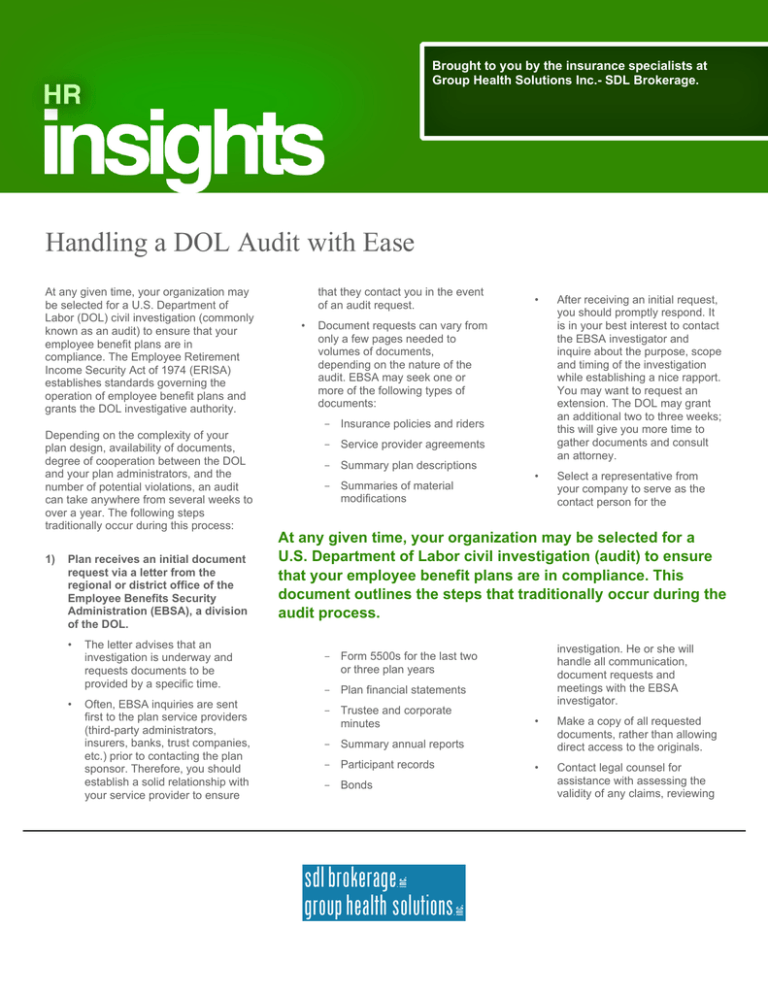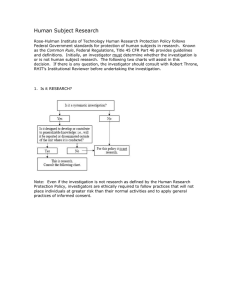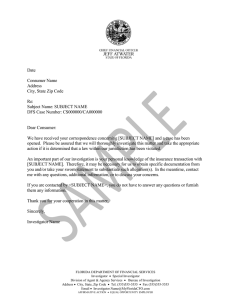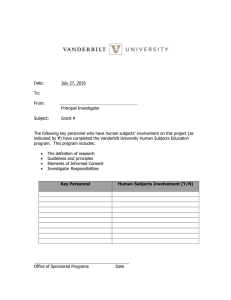
Brought to you by the insurance specialists at
Group Health Solutions Inc.- SDL Brokerage.
Handling a DOL Audit with Ease
At any given time, your organization may
be selected for a U.S. Department of
Labor (DOL) civil investigation (commonly
known as an audit) to ensure that your
employee benefit plans are in
compliance. The Employee Retirement
Income Security Act of 1974 (ERISA)
establishes standards governing the
operation of employee benefit plans and
grants the DOL investigative authority.
Depending on the complexity of your
plan design, availability of documents,
degree of cooperation between the DOL
and your plan administrators, and the
number of potential violations, an audit
can take anywhere from several weeks to
over a year. The following steps
traditionally occur during this process:
1)
Plan receives an initial document
request via a letter from the
regional or district office of the
Employee Benefits Security
Administration (EBSA), a division
of the DOL.
•
The letter advises that an
investigation is underway and
requests documents to be
provided by a specific time.
•
Often, EBSA inquiries are sent
first to the plan service providers
(third-party administrators,
insurers, banks, trust companies,
etc.) prior to contacting the plan
sponsor. Therefore, you should
establish a solid relationship with
your service provider to ensure
that they contact you in the event
of an audit request.
•
•
After receiving an initial request,
you should promptly respond. It
is in your best interest to contact
the EBSA investigator and
inquire about the purpose, scope
and timing of the investigation
while establishing a nice rapport.
You may want to request an
extension. The DOL may grant
an additional two to three weeks;
this will give you more time to
gather documents and consult
an attorney.
•
Select a representative from
your company to serve as the
contact person for the
Document requests can vary from
only a few pages needed to
volumes of documents,
depending on the nature of the
audit. EBSA may seek one or
more of the following types of
documents:
- Insurance policies and riders
- Service provider agreements
- Summary plan descriptions
- Summaries of material
modifications
At any given time, your organization may be selected for a
U.S. Department of Labor civil investigation (audit) to ensure
that your employee benefit plans are in compliance. This
document outlines the steps that traditionally occur during the
audit process.
investigation. He or she will
handle all communication,
document requests and
meetings with the EBSA
investigator.
- Form 5500s for the last two
or three plan years
- Plan financial statements
- Trustee and corporate
minutes
•
Make a copy of all requested
documents, rather than allowing
direct access to the originals.
•
Contact legal counsel for
assistance with assessing the
validity of any claims, reviewing
- Summary annual reports
- Participant records
- Bonds
documents before they are given
to the investigator and sorting
out any other legal issues. You
may want to conduct an internal
audit at this time to remedy any
problems prior to the onsite
investigation.
•
2)
4)
•
If the violations concern the civil
provisions of ERISA, EBSA will
take action to correct all violations
and restore plan losses. This may
include paying back to the plan or
participants to cover losses,
paying penalty amounts and
giving up profits.
•
If no violations are found by the
EBSA investigator, EBSA will
issue a closing letter explaining
that it has finished the
investigation, without further
action.
Notify senior management that
an investigation is underway and
the potential ramifications.
EBSA conducts an onsite
investigation.
•
3)
fiduciary breach before the
issuance of a VC Notice Letter,
you may save yourself from a 20
percent penalty required under
ERISA.
After receiving the initially
requested documents, the EBSA
investigator may also want to
review more documents at your
location. This may include, but is
not limited to, employee booklets
and forms, plan enrollment
records, payroll records, evidence
of electronic fund transfers,
insurance company financial
experience reports and
investment records.
5)
•
EBSA identifies potential ERISA
violations.
•
•
If the EBSA investigator identifies
potential ERISA violations, the
regional office will issue a
Voluntary Compliance (VC)
Notice Letter outlining the
violations and allowing the plan
sponsor a chance to rectify the
problem. Typically, the
investigator will first present these
problems to you orally and will
then submit the letter.
It is your obligation to investigate
the validity of DOL’s findings and
determine if you agree with them.
If you do not agree with these
findings and will not take action to
rectify the situation, you run the
risk of a lawsuit from the DOL.
If you agree with the violations
highlighted in the VC Notice
Letter, take action immediately to
fix the problem. If you fix a
6)
Keep senior management apprised
of the progress on the investigation.
•
Obtain as much information about
the investigation as possible from the
EBSA investigator.
•
Arrange a time to deliver
documentation to the investigator
that allows you enough time to gather
all the requested documents, while
also accommodating his or her
schedule.
•
Consult with your retirement service
providers when receiving a document
request to ensure they will be
involved in rectifying any
noncompliance issues.
•
Gather materials for an onsite
investigation in an orderly fashion
and have them ready for the
investigator when he or she arrives.
•
Have your legal counsel work with
interviewees to familiarize them with
the scope and purpose of the
investigation.
•
If your investigation yields a violation,
learn as much about the violation as
possible before the VC letter arrives.
Discuss these violations with your
legal counsel.
•
If you determine that you will make
changes to the alleged violations,
have your legal counsel work with the
DOL to ensure that there is an
understanding of exactly what needs
to be changed.
•
Generally it is advisable to cooperate
with the DOL and resolve the matter
as favorably and quickly as possible.
You will save both internal time spent
on the matter as well as legal fees.
EBSA creates a settlement
agreement.
EBSA investigator will interview
multiple individuals to validate
facts.
•
•
You and the EBSA may create a
settlement agreement after
negotiating how you will
voluntarily make corrections to
rectify violations. The following
actions may be detailed in this
agreement: amount of funds to be
credited, timing of each step to
rectify problem, corrective actions
and communications about the
investigation.
EBSA issues a closing letter
following voluntary compliance.
•
After the VC Notice letter is
issued and all problems have
been rectified, the EBSA will send
a closing letter explaining that
compliance has been achieved.
DOL Audit Suggestions:
Though this may appear to be a trying
process, it does not need to be. Consider
these best practices:
•
Treat the investigator with the utmost
respect and the investigation as a
major priority.
•
Consult with your legal counsel as
soon as a document request arrives.
This HR Insights is not intended to be exhaustive nor should any discussion or opinions be construed as professional advice.
© 2008, 2011 Zywave, Inc. All rights reserved.




